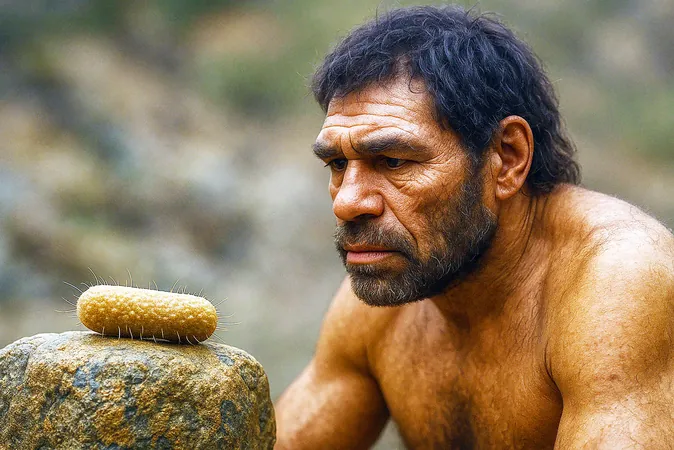
Unveiling LUCA: The Ancestor of All Living Things and How It Shaped Life on Earth
2025-04-19
Author: Ying
Every living organism on Earth, from vibrant plant leaves to soaring eagle feathers, shares a common code made up of just four DNA letters. This genetic uniformity poses a compelling question: Who was the original creator of life as we know it?
Meet LUCA: Our Ancestral Blueprint
The answer lies in the Last Universal Common Ancestor, or LUCA, which resides at the evolutionary divide between Bacteria and Archaea. LUCA represents a pivotal point in the story of life, uniting all known organisms under a single genetic alphabet and energy currency.
Dr. Edmund Moody from the University of Bristol led a groundbreaking study, analyzing thousands of genomes to uncover the extent of LUCA's genetic toolkit.
A Comprehensive Genetic Toolkit
The research revises previous estimates of LUCA's gene count, identifying around 2,600 essential genes—comparable to those found in modern bacteria. This genetic inheritance suggests LUCA was anything but a shadowy figure, but rather a robust organism equipped with advanced biological systems, including membrane pumps and DNA repair mechanisms.
Co-author Dr. Tom Williams emphasized the significance of this diverse dataset, stating they could confidently map out how LUCA lived and thrived in its time.
The Conditions of Early Earth
Dating back to approximately 4.2 billion years ago, only a short time after Earth's formation, LUCA existed in an environment characterized by asteroid impacts and volcanic upheavals. Hydothermal vents likely served as life-sustaining habitats teeming with necessary minerals that sparked crucial chemical reactions.
Notably, LUCA possessed the Wood–Ljungdahl pathway, which synthesized energy from raw materials, indicating it was capable of self-sufficiency.
An Arms Race with Viruses
Intriguingly, LUCA was not just a simple life form but already engaged in a battle for survival against viruses, hinting at an early immune system. The presence of genes similar to today's CRISPR technology suggests that viral interactions may have accelerated genetic innovation.
A Community of Microbes
LUCA likely coexisted alongside other primitive microbes. Its metabolic byproducts would have supported a recycling ecosystem, fostering a dynamic network of life that contributed to the early carbon and hydrogen cycles long before photosynthesis emerged.
Why LUCA Matters Today
This groundbreaking study not only illuminates our roots but also opens the door for future research into the evolution of prokaryotic life. Co-author Professor Anja Spang noted the interdisciplinary collaboration which signifies a leap in understanding how life started and evolved on Earth.
What's Next for the Study of Life's Origins?
As scientific techniques advance, researchers will continue to piece together LUCA's genetic puzzle, exploring untouched stretches of the seafloor for microbial communities that resemble our ancient ancestors.
Ultimately, the ongoing exploration of LUCA enhances our comprehension of life's resilience and adaptability, suggesting that similar processes may be occurring in Earth-like worlds across the cosmos.
Life, it seems, did not creep onto the Earth; it burst forth, fully equipped and eager to shape its surroundings, leaving a lasting legacy encoded in every organism today. This remarkable journey into our past might just suggest that we are part of a grander cosmic narrative.



 Brasil (PT)
Brasil (PT)
 Canada (EN)
Canada (EN)
 Chile (ES)
Chile (ES)
 Česko (CS)
Česko (CS)
 대한민국 (KO)
대한민국 (KO)
 España (ES)
España (ES)
 France (FR)
France (FR)
 Hong Kong (EN)
Hong Kong (EN)
 Italia (IT)
Italia (IT)
 日本 (JA)
日本 (JA)
 Magyarország (HU)
Magyarország (HU)
 Norge (NO)
Norge (NO)
 Polska (PL)
Polska (PL)
 Schweiz (DE)
Schweiz (DE)
 Singapore (EN)
Singapore (EN)
 Sverige (SV)
Sverige (SV)
 Suomi (FI)
Suomi (FI)
 Türkiye (TR)
Türkiye (TR)
 الإمارات العربية المتحدة (AR)
الإمارات العربية المتحدة (AR)